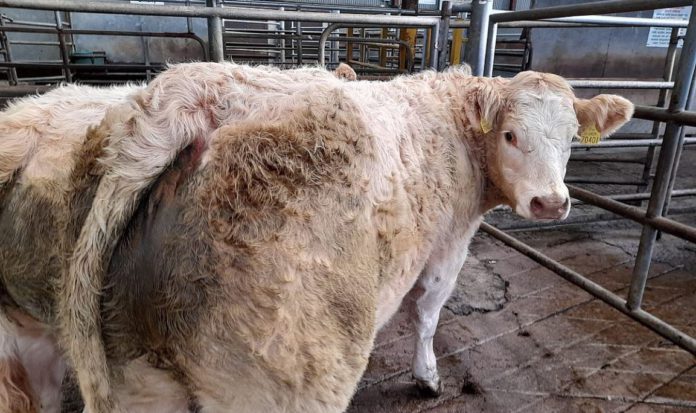Most suckler farms that have spring-born calves will be preparing to sell these weanlings in the coming weeks, writes Katie O’Toole, Walsh Scholar, Teagasc Galway/Clare.
Currently, it is interesting to note that demand for weanlings has increased with local marts recording €2.50 to €2.80/kg. Therefore, keeping up the performance of spring-born calves must be a priority.
At this stage of the year, a spring-calving cow is now contributing very little towards the performance of her calf, as milk supply has dropped significantly.
Indeed, any weanling over 250kgs should now be weaned and be given priority treatment. Research results have demonstrated that these ‘heavy-type’ weanlings will perform better off the cow. The average target for weanlings is a weight gain of 1kg/day.
With this in mind, it is important to set some easily achievable targets to aim for;
1. Aim for gradual weaning – Wean heavy calves first
2. Have your animals looking spick and span by introducing meal pre and post-weaning;
3. Aim for a stress-free weaning where possible for both animal and farmer;
4. Avoid panic selling by knowing the value of your weanling; research current sale prices at local marts.
Meal feeding
Calves are at one of the most efficient stages of their lives prior to weaning. A calf’s intake once 200-days-old should be made up of 25% milk, with the other 75% coming from sources like grass and meal.
With grass being plentiful on most beef farms at the moment, it is important that farmers are utilizing this where possible.
With some herds not scheduling to wean calves until October, creep grazing the calves ahead of the cows should highly be considered.
Feeding meal to weanlings has proven to be economically viable. Young weanlings are able to convert meal quickly into live weight gain. The response from weanlings to meal feeding is 6:1 so for every 6 kg of meal feed to that weanling, an extra 1kg of live weight is gained.
With the average cost of meal being 30 cent/kg, it will cost you €1.80 to put that extra kg onto your weanling. At present, weanlings are making up to €2.50/kg at marts. Creep grazing also allows the calves access to the best quality grass, maintaining thrive.
By feeding in troughs, meal can be regulated rather than feeding meal in creep feeders ad-lib. Concentrate per day should begin at 0.5kg and build up to values below:
- Well-muscled bulls suitable for export;: 2-3.5kg/day;
- Other continental bull weanlings: 1.5-2.5kg/day;
- Heifer weanlings suitable for export: 2.5kg/day; and,
- Other continental heifer weanlings: 1.0kg/day.
Vaccination programme
Before considering a vaccination programme, dose calves for lung worm and stomach worm at least four weeks prior to weaning, as this will allow for a sufficient amount of time for the lungs to recover.
By killing the stomach worm, cattle will be able to better utilize grass in the coming weeks, which will lead to an increase in average daily gain, with an aim of 1kg/per day.
Bovine Respiratory Disease is the number one cattle killer in Ireland. By having a vaccination programme in place, you increase the chances of avoiding treatment costs, labour, production losses and possible death. Also, to comply with the BEEP-S scheme, farmers who opted for this measure are obliged to vaccinate before weaning/sale.
- Option 1: Single shot programme- covers RSV, Pi3 and IBR (2-4 weeks before weaning/sale);
- Option 2: Two shot programme – Cover RSV, Pi3, Mannheimia Haemolytica and IBR (First subcutaneous injection 6-8 weeks before weaning. (Second subcutaneous injection 3-4 weeks later). It is vital for your weanling that you go in with the second shot ensure stable immunity,
Stress-free weaning
Weaning methods will vary from farm-to-farm, it is common that both cows and weanlings are housed in a slatted shed and separated. We are all familiar with the ‘bawling’ for a number of nights in October and November.
While the stocks are in a safe environment, it is the most stressful method for weanlings. A new environment, a new diet and the sudden separation is huge distress for a weanling which could lead to health issues such as pneumonia.
Avoid abrupt weaning and try and have a more gradual approach eg forward creep grazing and stop day-time suckling and progress to every second day. Some farmers will remove 2-3 cows from the main herd every couple of days and house them.
Their calves are still familiar with their surroundings out in the field and with other cows/calves which will help minimize stress. Wean heaviest calves first.
In a suckler weanling system, achieving the best possible price for your weanling is critical as this sale price must at least cover the cost of keeping the cow for the past year and also try and add to any farm profits!





